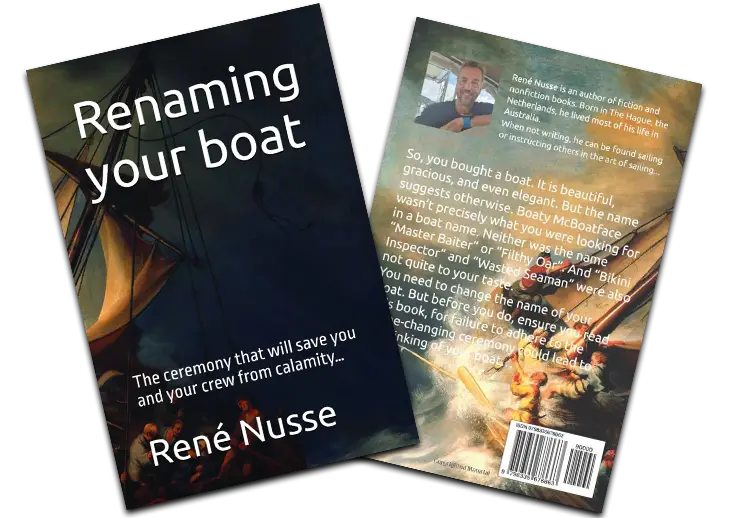Managing Waste on a Sailing Boat: A Practical Guide for Cruisers
Life aboard a sailing vessel demands self-sufficiency, and waste management is one of the most important—yet often overlooked—parts of sustainable cruising. Whether day-sailing or embarking on an ocean crossing, properly handling waste is critical for hygiene, safety, environmental responsibility, and compliance with international maritime laws.
Here’s a breakdown of how to effectively manage different types of waste on a sailing boat.
1. Types of Waste Aboard
Waste on a sailboat generally falls into five categories:
- Organic waste (food scraps)
- Plastics and packaging
- Glass, cans, and metals
- Human waste (black water)
- Grey water (from showers, sinks, dishwashing)
Each requires different handling and disposal methods.
2. General Waste Reduction Strategies
The best waste management starts with waste prevention:
- Buy in bulk to reduce packaging.
- Remove outer packaging before departure.
- Choose products with biodegradable or recyclable packaging.
- Use reusable containers and cloths instead of single-use plastics.
This reduces the amount of trash on board and makes storage more manageable.
3. Organic Waste (Food Scraps)
- Short trips: Store food waste in sealed compost bins or biodegradable bags.
- Long passages: If permitted by law and far enough from land (usually >12 nautical miles), some cruisers dispose of small, non-plastic-contaminated organic waste overboard.
- Best practice: Compost organic waste where possible or dispose of it in appropriate waste bins at shore facilities.
4. Plastics and Non-Biodegradable Waste
Separate and compact: Flatten bottles, cut down boxes, and segregate recyclables.
- Store in labelled bags or bins. Use dedicated lockers or lazarette space to keep the trash secure and odour-free.
- Never throw plastics overboard. Even small pieces can harm marine life.
Some sailors use a trash compactor or heat-shrink method to reduce space, but this doesn’t eliminate the need to dispose of waste ashore properly.
5. Glass, Cans, and Metals
- Rinse before storage to reduce smell and insects.
- Crush cans to save space.
- Store glass carefully to avoid breakage.
Like plastics, these should be taken ashore for recycling or disposal.
6. Human Waste (Black Water)
Marine Toilets and Holding Tanks
Coastal cruising: Most countries require that black water be held in a sealed holding tank and pumped out at a marina or designated pump-out station.
Offshore cruising: Many jurisdictions allow overboard discharge of treated waste beyond a specific distance (commonly 3 or 12 nautical miles).
- Remember that when you are anchored in Marine Parks around the Whitsundays, your black water seacock must be closed. Authorities will fine you if they are left open, even if you do not use the head.
Composting toilets: A growing trend among sailors, these separate liquids and solids and reduce pump-out needs entirely, although solids must still be disposed of ashore responsibly.
Check local and international maritime laws, such as MARPOL Annexe IV, which governs sewage discharge from vessels.
7. Grey Water (Sinks, Showers, Dishwashing)
Grey water is often discharged directly overboard, but can still pollute sensitive marine ecosystems.
Tips to reduce impact:
- Use biodegradable, marine-safe soaps.
- Minimise the use of harsh chemicals.
- Install grease traps in the galley sink.
Some modern boats incorporate grey water tanks, but space and weight are constraints.
8. Hazardous Waste
Items such as batteries, engine oil, filters, antifreeze, paint, and cleaning chemicals must be:
- Stored safely in leak-proof containers.
- Disposed of only at licensed shore facilities.
Never dump hazardous waste overboard—it’s illegal and environmentally damaging.
9. Waste Logs and Compliance
Some countries require visiting vessels to maintain a waste management log, particularly for black water and hazardous substances.
If travelling internationally:
- Familiarise yourself with MARPOL regulations.
- Know which waste types can be discharged and where.
- Be prepared for inspection in certain ports.
10. Community and Environmental Responsibility
Many sailors practice “leave no trace” principles. This means:
- Packing out what you pack in.
- Participating in marina or beach cleanups.
- Helping educate others on best waste management practices.
11. Tip of the Day
Waste gets smelly and will rot, so we store any type of waste in our empty 2-litre juice bottles (with lids). If it is too big, chop it up. A full bottle can be stored for months with the lid properly secured. There is no sticky mess.

Conclusion
Managing waste on a sailing boat is part of being a responsible mariner. It requires planning, space efficiency, environmental awareness, and legal compliance. When done properly, it ensures a safer, cleaner experience for both the crew and the oceans we depend on.
Author
-

Rene is a keelboat instructor and sailing coach in the Mandurah area WA. He is also the author of several books about sailing including "The Book of Maritime Idioms" and "Renaming your boat".
View all posts


